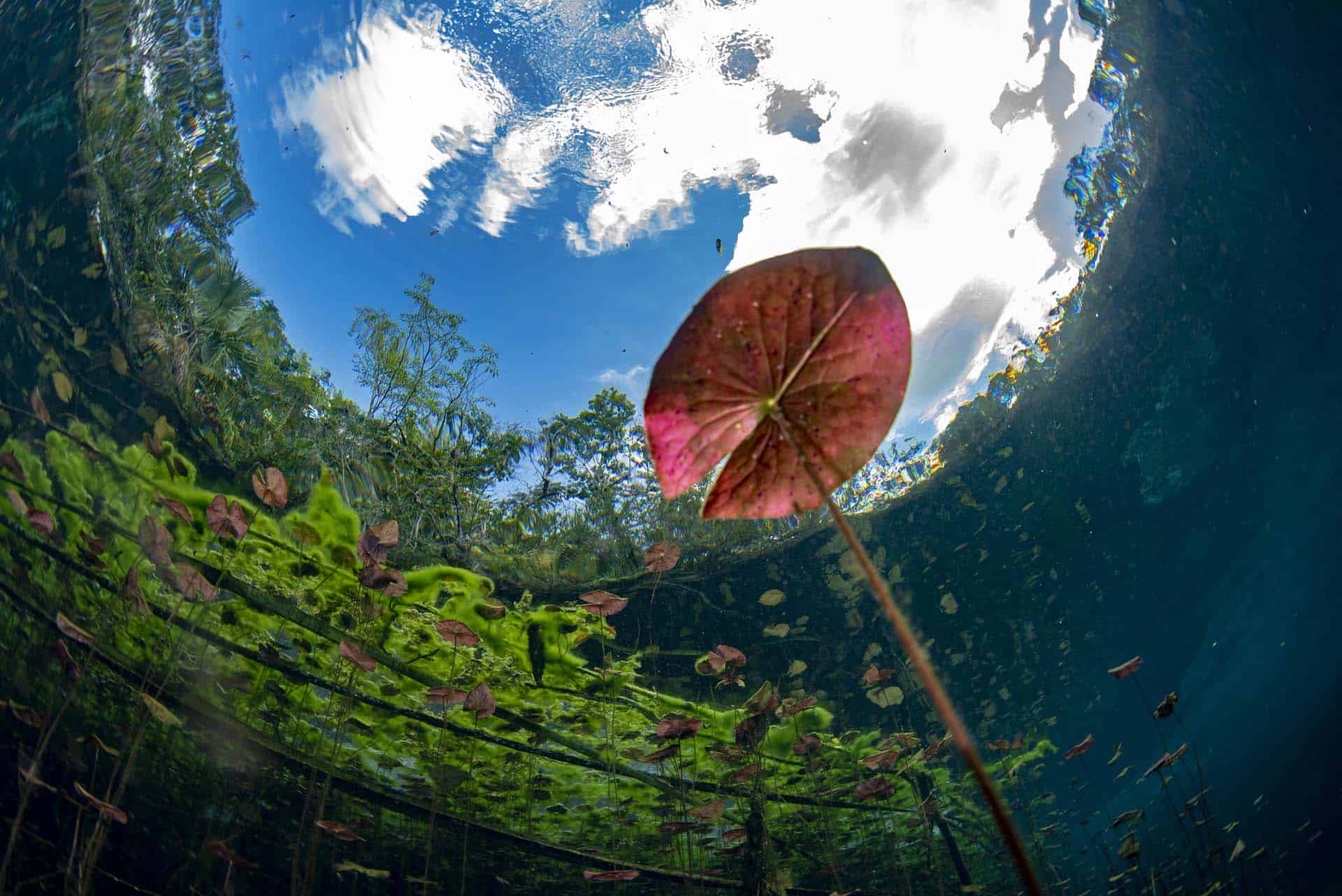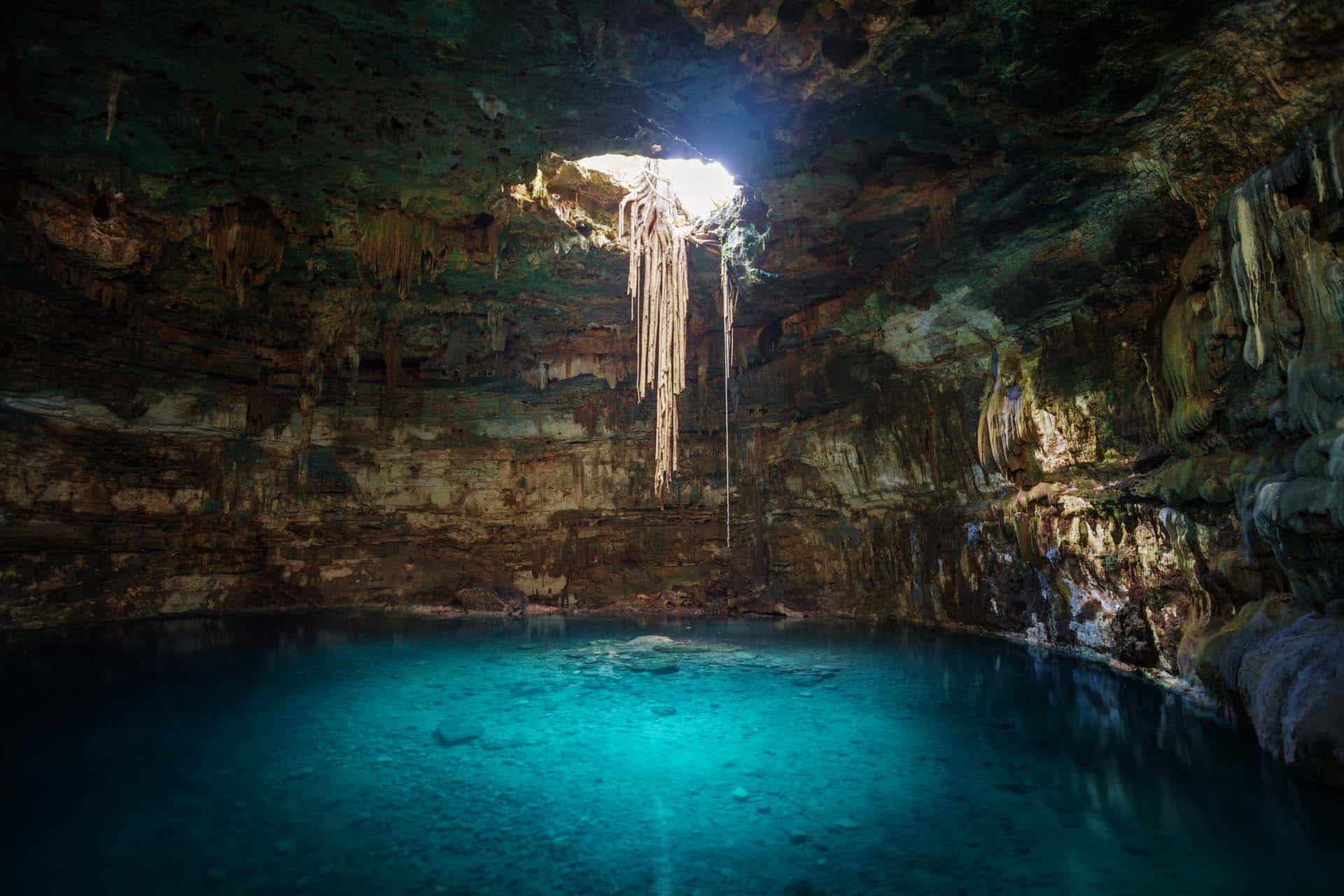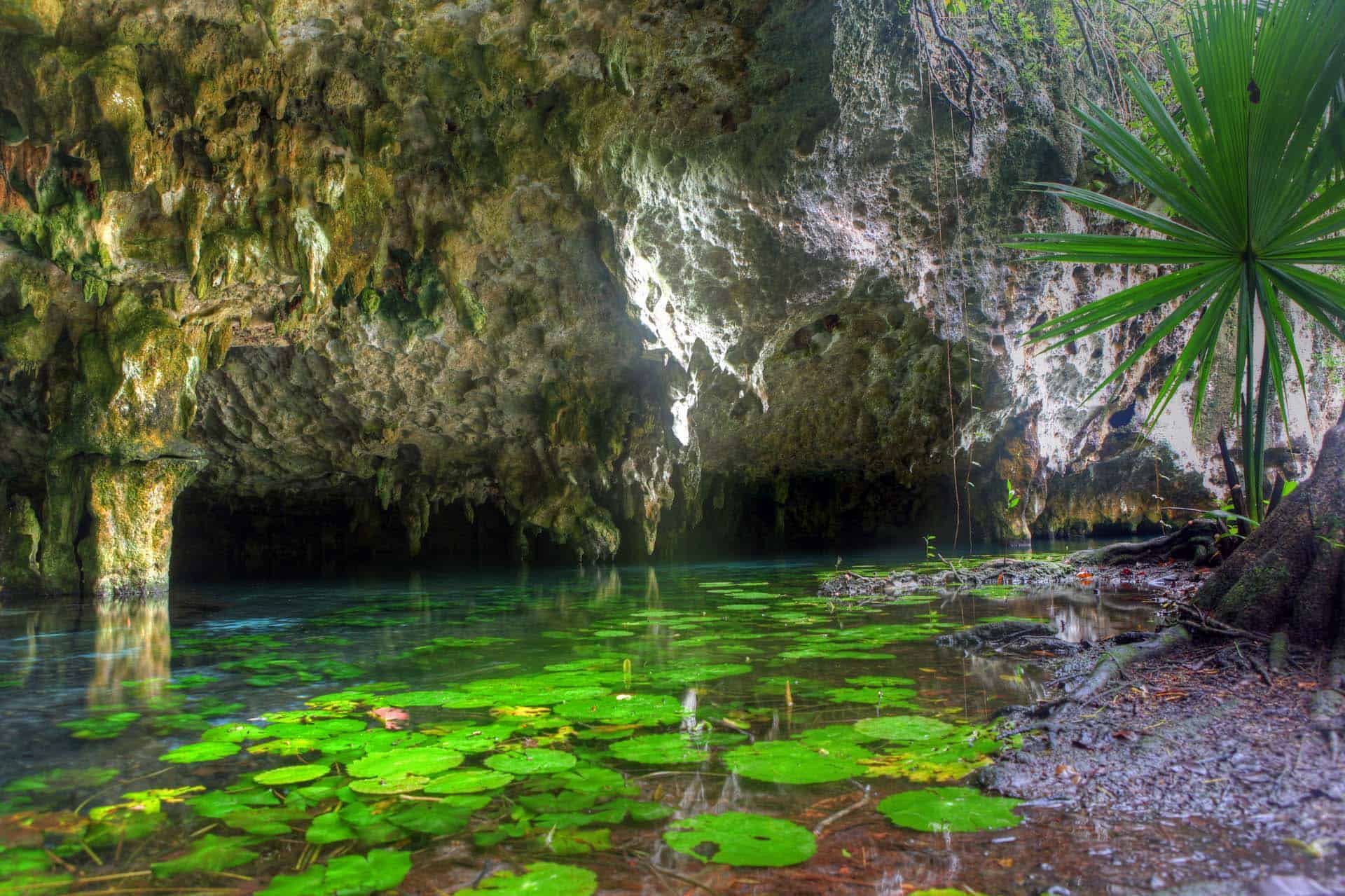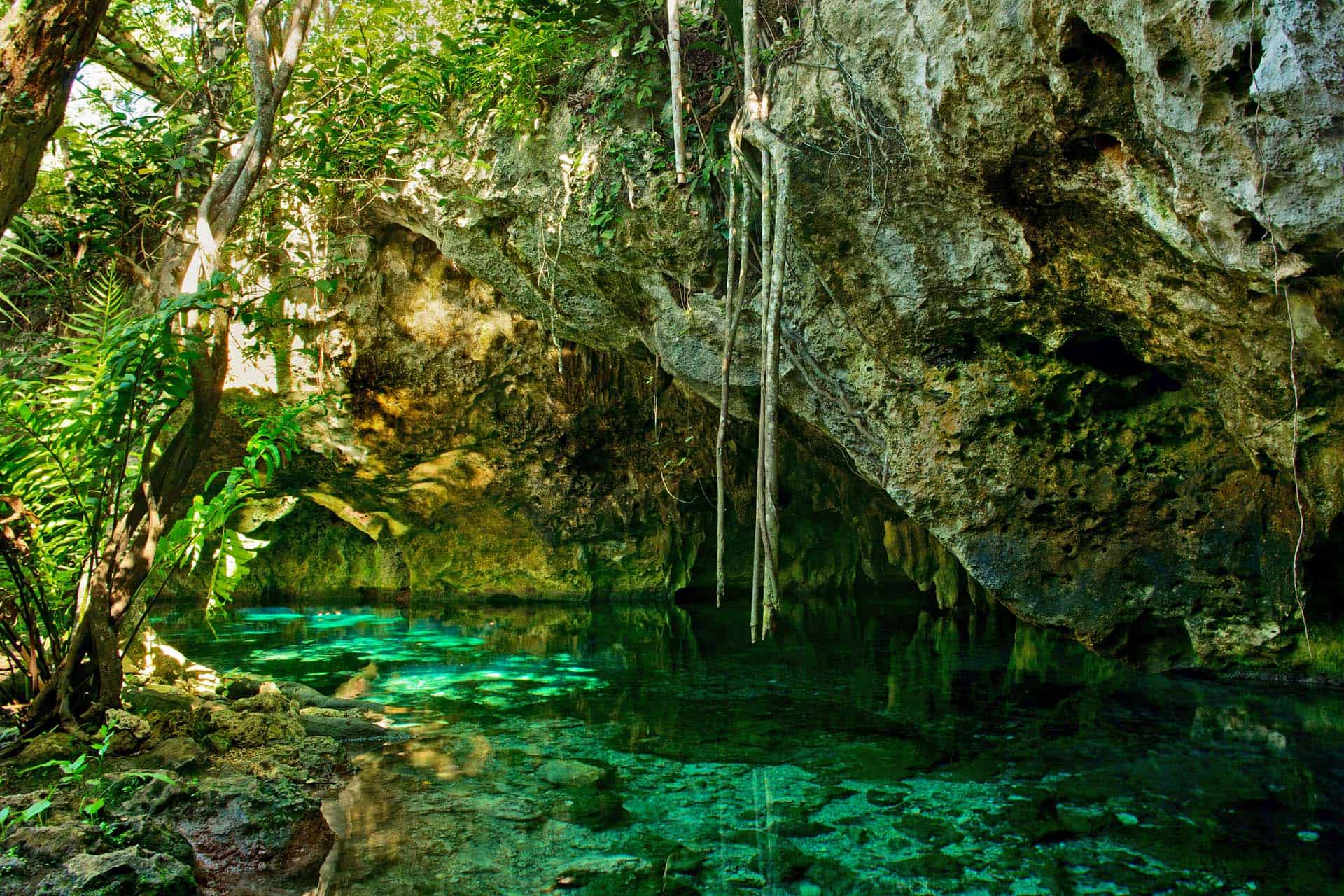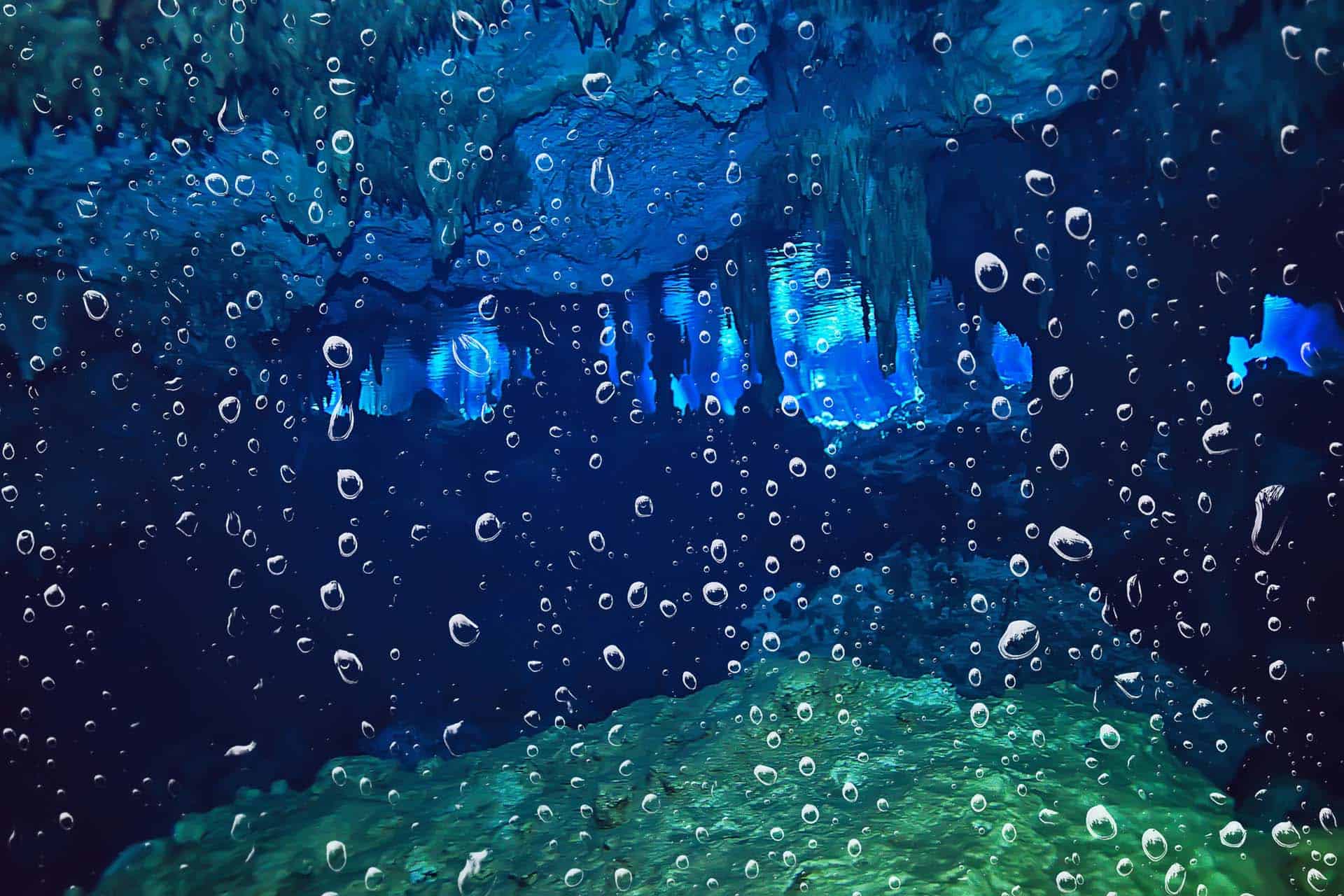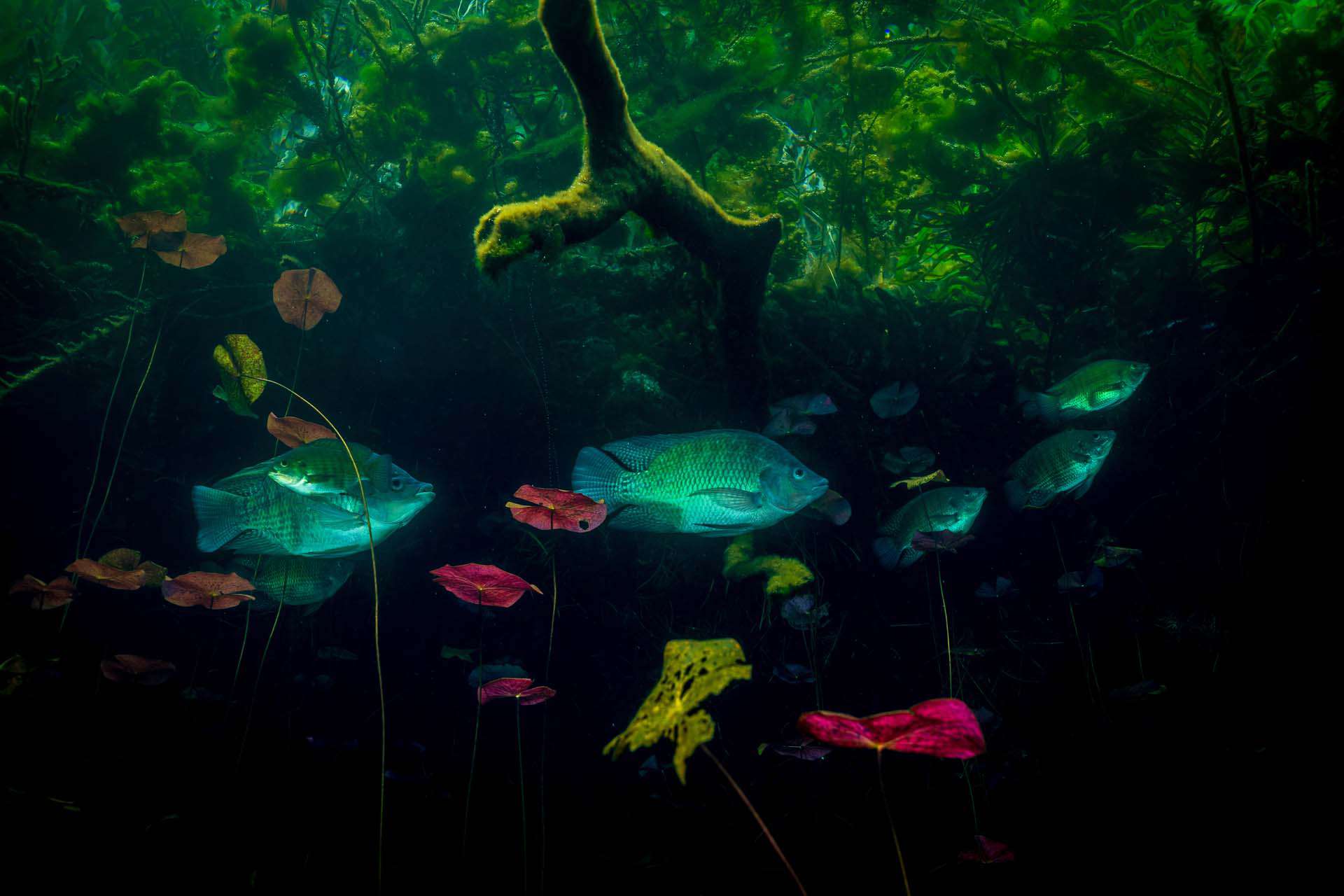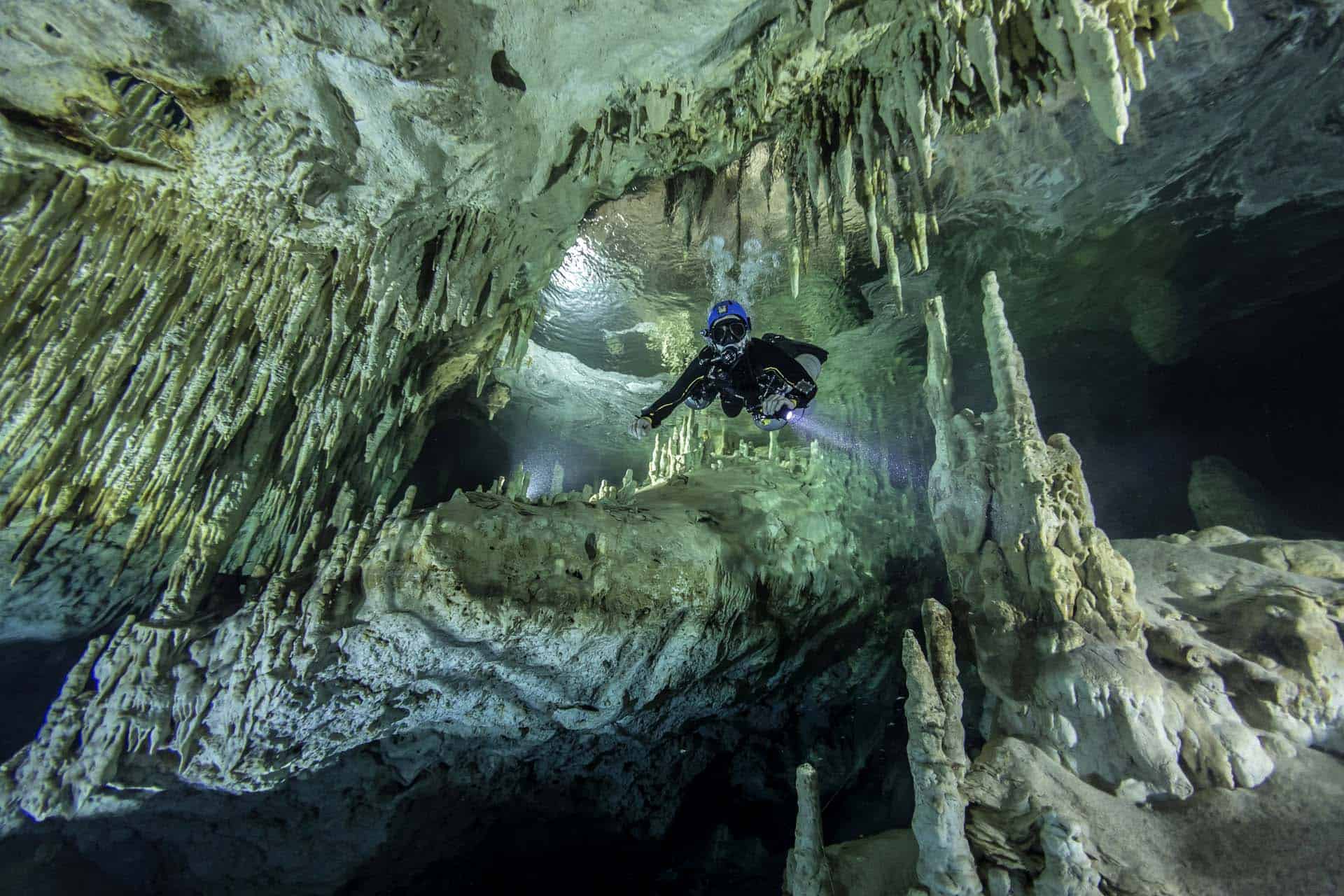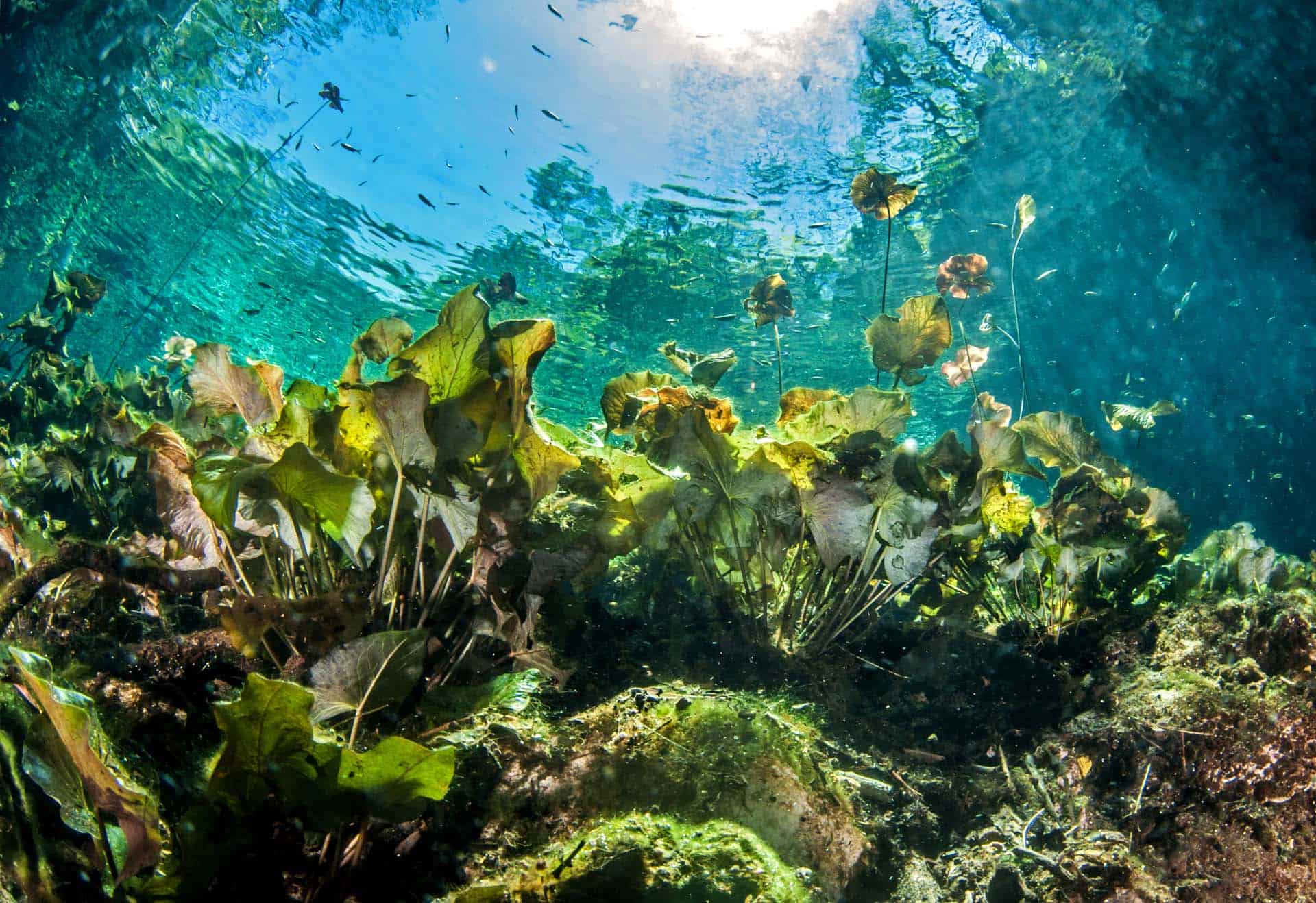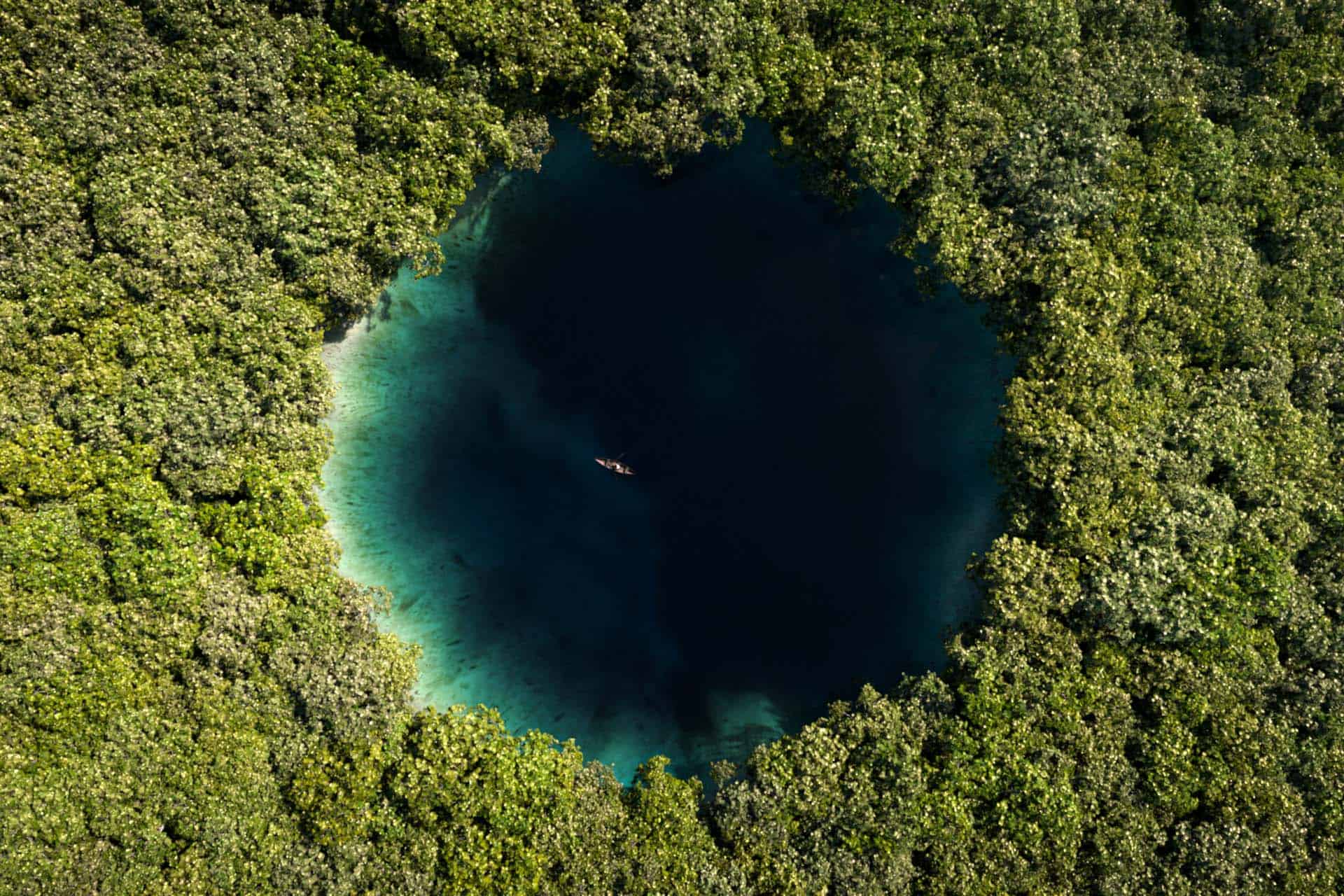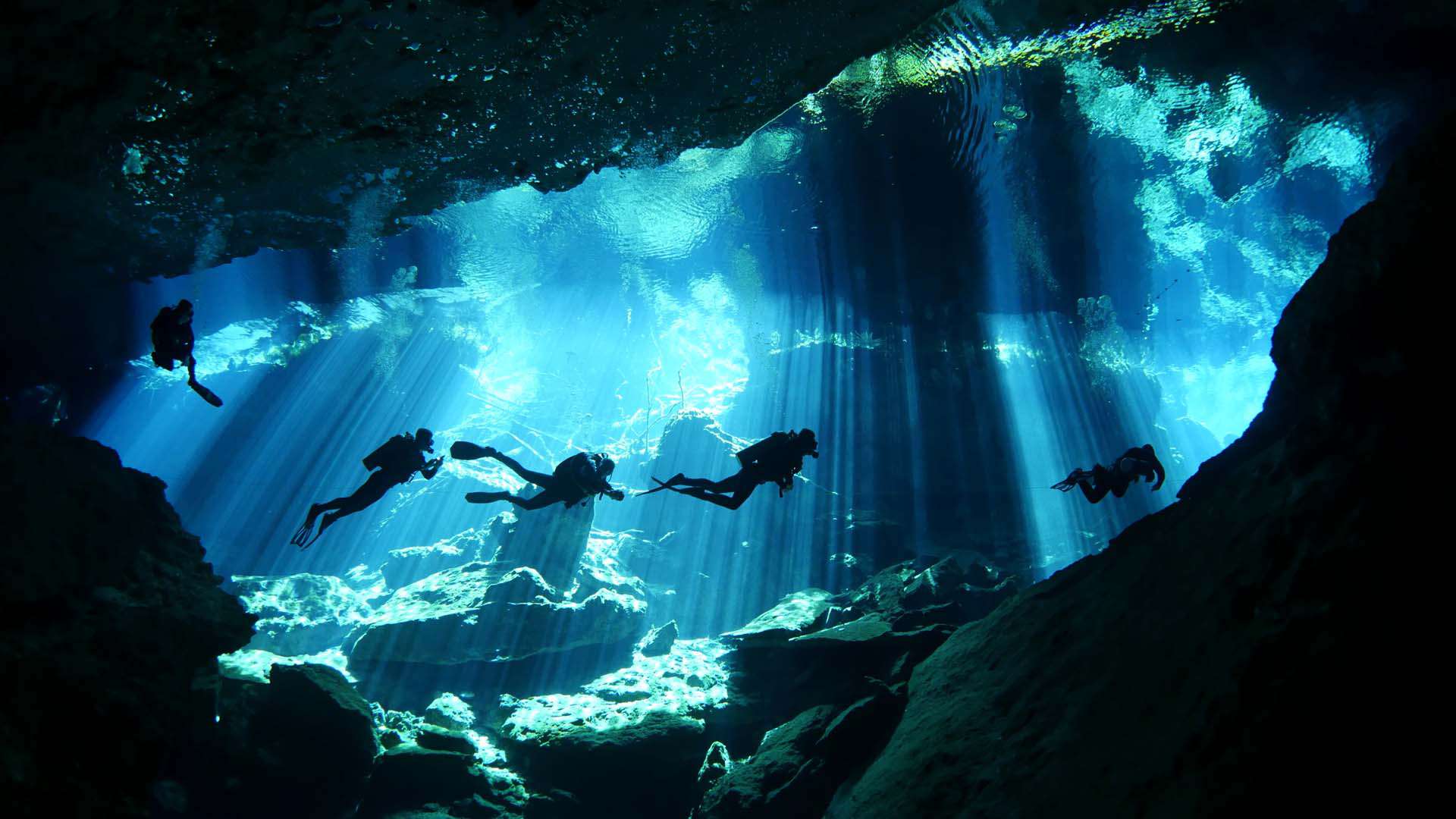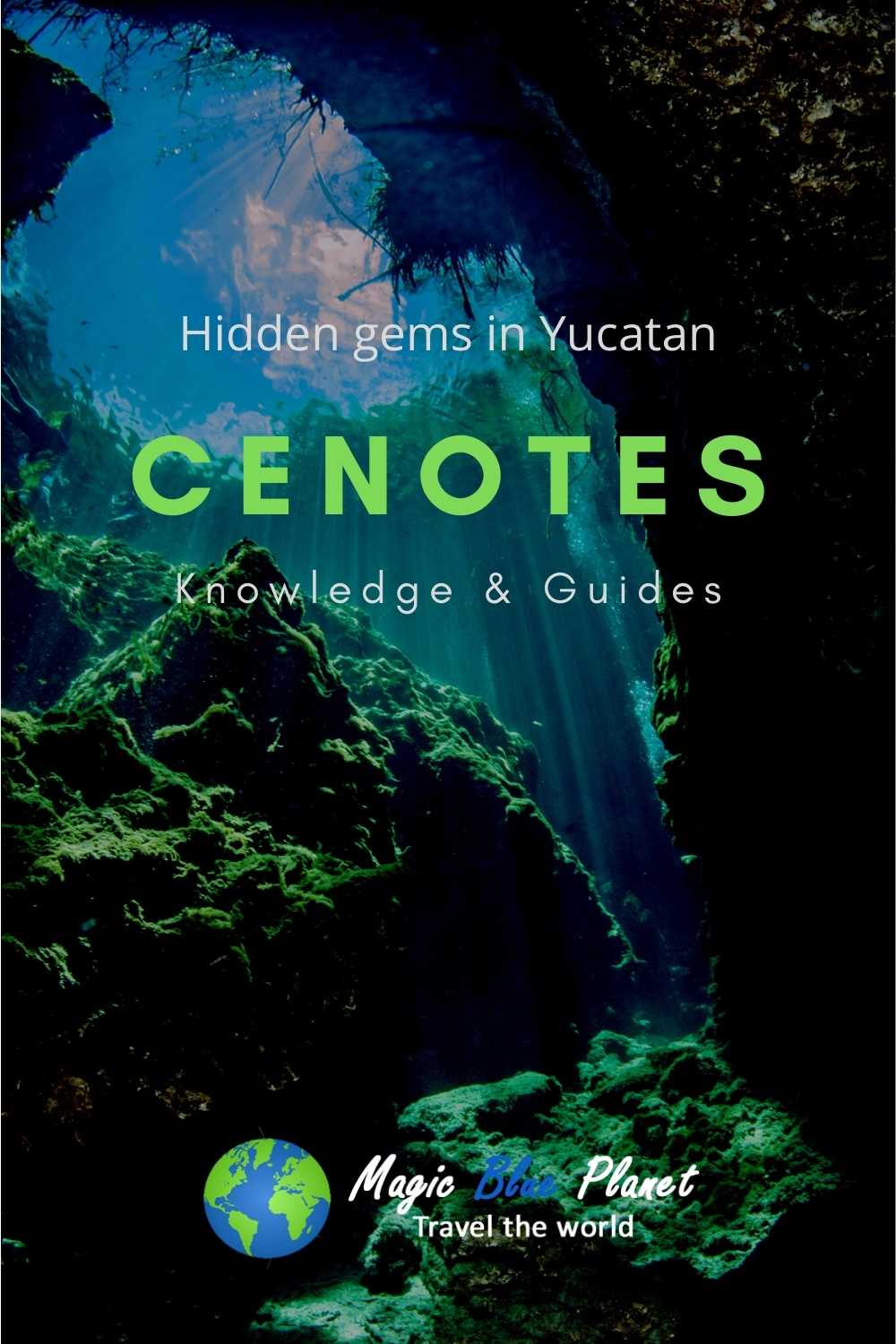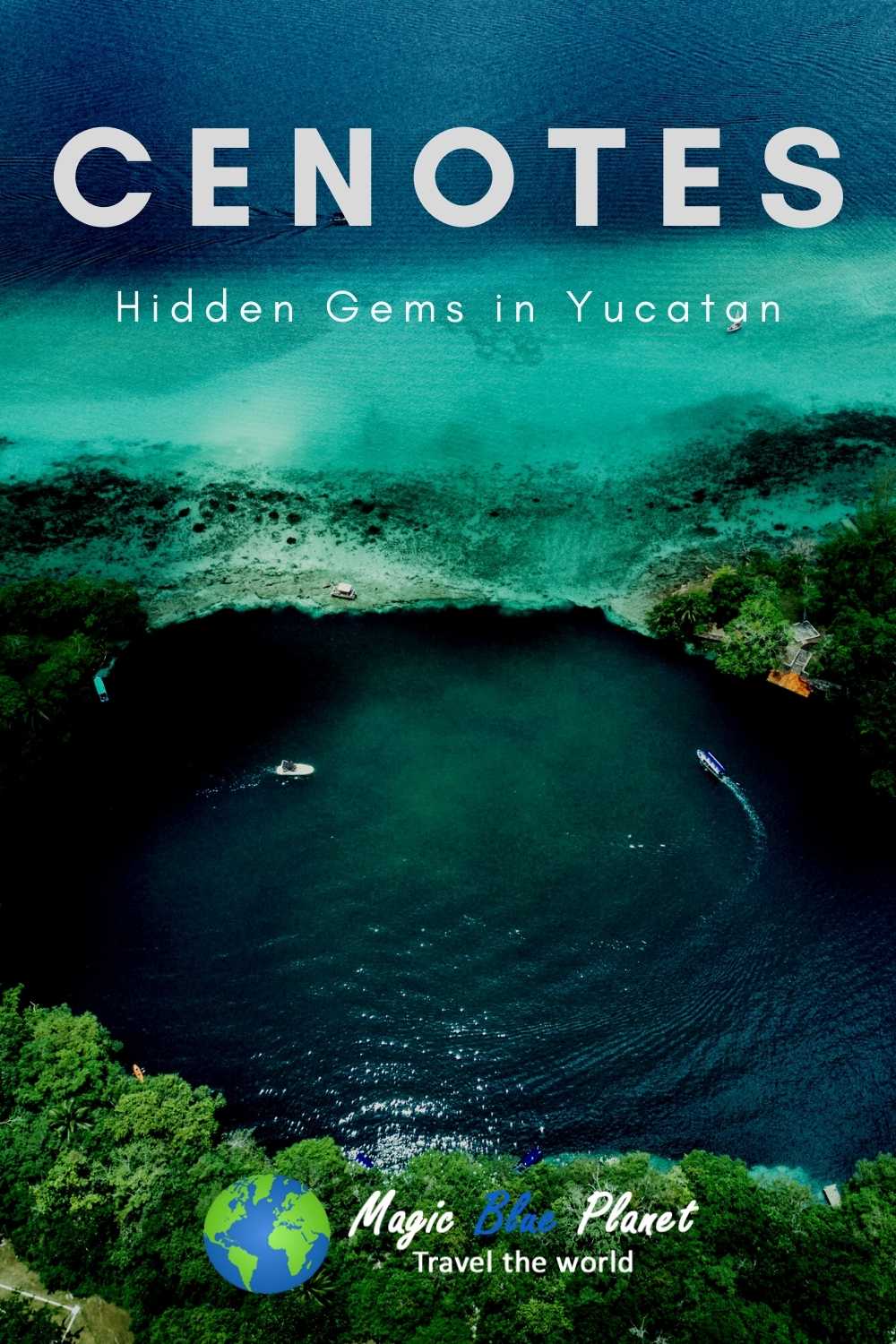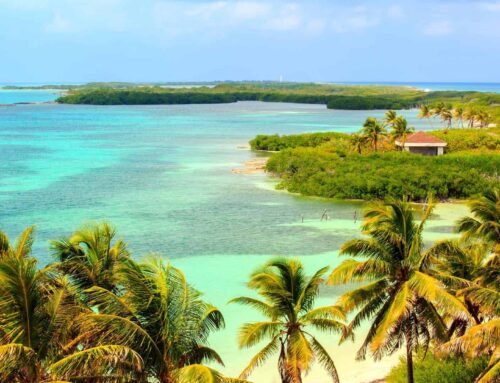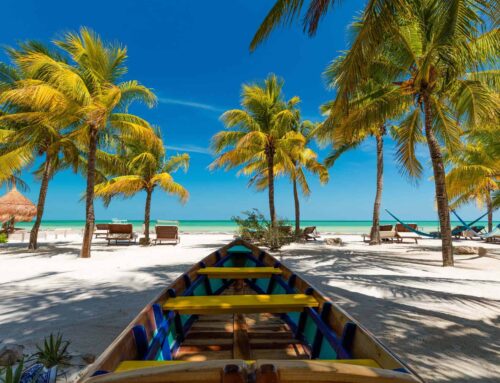About Cenotes – Mysterious Underground Waters
About Cenotes – Mysterious Underground Waters
About Cenotes – Mysterious Underground Waters
The Cenotes are one of the great attractions of Yucatan, and some of them have already become real celebrity. No wonder – each of them is different and unique in its own way. They are quite magical places that already instilled great reverence for the ancient Maya as an access to the underworld.
Content: About Cenotes – Mysterious Underground Waters
How a cenote is formed?
Cenotes are technically underground caves in karst areas with access to groundwater. That doesn’t sound quite exotic at first, doesn’t it? However, due to the erosion of the limestone, the ceilings of the caves have often simply collapsed over time. The result are underground ponds and lakes of incredible beauty that get light through the collapsed cave ceiling.
The cenotes are often inhabited by fish and turtles and some of them also have vegetation, depending on the light. Many of the caves are decorated with impressive stalactites and stalagmites and act on the eye of the visitor like underground cathedrals.
The name Cenote comes from the Mayathan, the Mayan language. He refers to these underground, water-filled caves as the “Holy Spring”. And in fact, the water in the cenotes for the Maya was often the only supply of drinking water, as there is no fresh water on the surface on the Yucatan peninsula.
What types of Cenotes are there?
The cenotes are all completely unique – it is impossible to find even two that are similar to each other. They also have a very different age. And this leads to a completely different appearance. You can distinguish the cenotes according to the following criteria.
Cavern Cenotes
They are the youngest among the Cenotes. Their water level is still inside of a closed cave. The color of its crystal-clear water can appear between emerald green and deep blue. But it is only visible when the sunlight falls through the holes in the ceiling. The cavern cenotes usually carry magnificent decorations made of stalactites on the ceiling.
Semi-open cenotes
This type of cenotes is in middle age. You are still too young to be completely open. But a part of them is already exposed to the elements. Some of them are connected to other cenotes, and often you can see beautiful plants in their crystal-clear waters.
Open cenotes
The open cenotes are already very old, and with the course of the millennia the cave ceiling has completely disappeared. They already lie free and open in the daylight. Their steep walls are often overgrown with flowers and plants, giving them a magical look. There are usually many species of birds and butterflies living in their vicinity.
Ancient cenotes
At the very old cenotes nothing can be seen from the former cave. In millions of years the rock has eroded and they are completely open. They look more like lagoons and have the magic of beautiful little paradises in the middle of the Mayan jungle.
How many cenotes are there?
Most cenotes are found on the Yucatan peninsula in Mexico and in neighboring Belize. Their exact number is unknown as new ones are discovered again and again. In total, however, their number on the Yucatan Peninsula is estimated at more than 6,000.
Only in the Mexican state of Quintana Roo, where the Riviera Maya with the famous resorts of Cancun, Playa del Carmen and Tulum is located, more than 1,000 cenotes are known. They have an average depth of about 15 meters – but some of them also make it to more than 100 meters.
Most tourists see the Cenotes only as a natural swimming pool. But this is perhaps a naive way of looking at. Many cenotes in Yucatan are linked to the largest known system of underwater caves on Earth.
The longest detected system to date is Sac Aktun with a length of 222 km. It is connected to the surface over 226 cenotes and has its lowest point in the Blue Abyss at 119 m depth. Due to a dry passage, it is also connected to the system Dos Ojos further north.
With a total length of 372 km, Sac Aktun/Dos Ojos is the longest known system of underwater caves in the world. Closely followed by Ox Bel Ha with a length of 256 km, which is accessible over more than 140 Cenotes. In Quintana Roo, Mexico alone, more than 1000 km of underground rivers have already been explored.
The Maya and the cenotes
The ancient Maya used the Cenotes as a drinking water well. Other ancient high cultures have always originated on large rivers: Euphrates, Tigris, Ganges or Nile. The Maya in Yucatan did not have this luxury, because there is no fresh water on the surface. But they had the cenotes.
In addition, the Mayans have probably also used the cenotes as sacred places for offerings and burial sites. Ceramics, jewelry and human bones were found in several cenotes near the entrance. Especially famous for its finds is the Cenote Sagrado in Chichén Itza, where the Maya offered their gods richly decorated human sacrifices.
Traces of human activity have been found in some places in the underground rivers deep inside the cave systems. Bones or fireplaces, for example. But they are much older than the Mayan culture. Some of them date back to more than 8,000 years ago. That was shortly after the last ice age. Many of the caves were still dry at the time because the high glaciation caused the sea level to be about 130 meters lower than it is today.
What to expect on a cenote?
Today, of course, the Cenotes are no longer used as drinking water wells. Nor for human sacrifices. Instead, they receive plenty of inflow of adventure-hungry tourists. But who wonders?
The Cenotes are all beautiful and unique without exception. Some are large, others small. Some entrances are visible from afar, others are well hidden. But all are full of fresh, cool water. And that’s a huge advantage in the high heat in Yucatan.
Depending on the type of cenote, you can experience a wide variety of things. The places with crystal clear water are of course very popular to take a refreshing swim. Or for snorkeling in the gardens underwater.
Other cenotes offer more experiences and adventures. In some places you can snorkel or paddle in a canoe, plunge from high rocks into the cool water or fly through the air with zip lines.
Especially after an exploration of the ruins of the ancient Maya or the colonial cities of Yucatan, swimming in a cenote is a refreshing change.
Especially in the places that are well prepared for visitors, you will usually also find some facilities. Sanitary facilities, hammocks or deckchairs, changing rooms and lockers, and possibly even snacks and refreshing drinks ensure your well-being. To some cenotes there are also great guided tours.
In many cenotes there is also the opportunity to dive. These dives are unique. You can find out more in our article about diving in Cenotes.
Attention!
If you’re traveling without a guide, never swim into the underground tunnels. Often the water level rises abruptly with the tides of the sea, and you can drown quite quickly. Apart from that, it is also very easy to get lost.
How can you get to the Cenotes?
Most cenotes are quite remote in the middle of the jungle of Yucatan. Or just remote. For example, in the north of Yucatan, near the Gulf Coast of Mexico.
There, a larger number of cenotes lie in a circular collocation on the edge of a very large crater. It is the Chicxulub crater with a diameter of about 180 km. It was formed about 66 million years ago by the impact of a very large meteorite. That was the one that made the dinosaurs die out.
But well – if you want to go to the cenotes, you should first consider which one should be. The touristy well-developed places are easily accessible by guided tour. The more natural Cenotes, on the other hand, can only be reached by car. And depending on where you want to go, you might have to expect a drive of several hours.
So, you should plan your trip carefully. To help you, we have compiled these guides to the most beautiful cenotes for you.
Conclusion
Well – if you’ve read so far, now you know the most important things about Cenotes. And if you’ve written a visit to one of these wonderful places in your travel planning, you’ll probably experience an unforgettable day. Therefore, we have compiled some guides to beautiful Cenotes in the main regions and a guide to scuba diving in Cenotes for you.
Related Posts
You might also be interested in this

